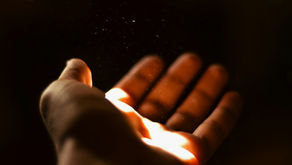The Bab & the Babi Movement
- Uplifting Words
- Dec 27, 2018
- 4 min read
Updated: Dec 29, 2018

Why Baha'is say their faith was founded in 1844
The early nineteenth century was a period of messianic expectations in many lands. Deeply disturbed by the implications of scientific inquiry and industrialization, earnest believers from many religious backgrounds turned to the scriptures of their faiths for an understanding of the accelerating processes of change.
In Europe and America groups like the Templers and the Millerites believed they had found in the Christian scriptures evidence supporting their conviction that history had ended and the return of Jesus Christ was at hand. A markedly similar ferment developed in the Middle East around the belief that the fulfilment of various prophecies in the Qur'an and Islamic Traditions was imminent.
By far the most dramatic of these millennialist movements emerged in Iran. It focused on the person and teachings of a young merchant from the city of Shiraz, known to history as the Bab. From 1844 to 1863, Persians of all classes were caught up in a storm of hope and excitement, aroused by the Bab's announcement that the Day of God was at hand and that He was Himself the One promised in Islamic scripture. Humanity stood, He said, on the threshold of an era that would witness the restructuring of all aspects of life.
In some respects, the Bab's role can be compared to John the Baptist in the founding of Christianity. The Bab was Baha'u'llah's herald: His primary mission was to prepare the way for Baha'u'llah's coming. Accordingly, the founding of the Babi Faith is viewed by Baha'is as synonymous with the founding of the Baha'i Faith--and its purpose was fulfilled when Baha'u'llah announced in 1863 that He was the Promised One foretold by the Bab.
An Independent Religion
At the same time, however, the Bab founded a distinctive, independent religion of His own. Known as the Babi Faith, that religious dispensation spawned its own vigorous community, own scriptures, and left its own indelible mark on history.
The Babi Faith was founded on 23 May 1844 when a 25-year-old merchant in the Iranian city of Shiraz announced that He was Islam's promised Qa'im, "He Who Will Arise." Although the young merchant's given name was Siyyid 'Ali-Muhammed, He took the name "Bab," a title that means "Gate" or "Door" in Arabic. His coming, the Bab explained, represented the portal through which the universal Messenger of God expected by all humanity would soon appear.
Accounts agree that the Bab was an extraordinary child. Born on 20 October 1819, He possessed a surprising wisdom and nobility, reminiscent of the young Jesus, Upon reaching manhood, the Bab joined his uncle in the family business, a trading house. His integrity and piety won the esteem of the other merchants with whom He came in contact. He was also known for His generosity to the poor.
After His announcement, the Bab attracted followers rapidly, and the new religious movement spread through Iran like wildfire.
This growth stirred opposition and persecution--especially among the religious establishment, who saw a threat to their power and prestige. In the course of this persecution, the Bab was imprisoned several times.
His major work, the Bayan, abrogated certain Muslim laws and replaced them with new ones. The Bayan stressed a high moral standard, with an emphasis on purity of heart and motive. It also upheld the station of women and the poor, and it promoted education and useful sciences.
The central theme of the Bayan was the imminence of a second Messenger from God, one Who would be far greater than the Bab, and Whose mission would be to usher in the age of peace and plenty that had for so long been promised in Islam, as well as in Judaism, Christianity, and all the other world religions.
Persecution and Execution
The hearts and minds of those who heard the message of the Bab were locked in a mental world that had changed little from medieval times. Thus, by proclaiming an entirely new religion, the Bab was able to help His followers break free entirely from the Islamic frame of reference and to mobilize them in preparation for the coming of Baha'u'llah.
The boldness of this proclamation--which put forth the vision of an entirely new society--stirred intense fear within the religious and secular establishments. Accordingly, persecution of the Babis quickly developed. Those opposed to the Bab ultimately argued that He was not only a heretic, but a dangerous rebel. The authorities decided to have Him executed.
On 9 July 1850, this sentence was carried out, in the courtyard of the Tabriz army barracks. Some 1O,OOO people crowded the rooftops of the barracks and houses that overlooked the square. The Bab and a young follower were suspended by two ropes against a wall. A regiment of 750 Armenian soldiers, arranged in three files of 250 each, opened fire in three successive volleys. So dense was the smoke raised by the gunpowder and dust that the sky was darkened and the entire yard obscured.
As recorded in an account filed with the British Foreign Office, the Bab was not to be seen when the smoke cleared. His companion stood uninjured and untouched by the bullets. The ropes by which he and the Bab had been suspended were rent into pieces.
The Bab was found back in His cell, giving final instructions to one of His followers. Earlier in the day, when the guards had come to take Him to the execution ground, the Bab had warned that no "earthly power" could silence Him until He had finished all that He had to say. Now, when the guards arrived a second time, the Bab calmly announced: "Now you may proceed to fulfill your intention."
For the second time, the Bab and His young companion were brought out for execution. The Armenian troops refused to fire again, and a Muslim firing squad was assembled and ordered to shoot. This time the bodies of the pair were shattered, their bones and flesh mingled into one mass. Surprisingly, their faces were untouched.





















